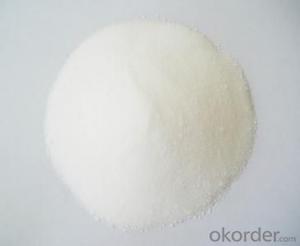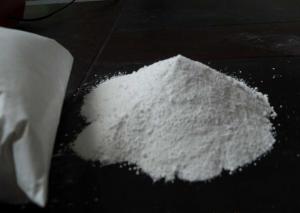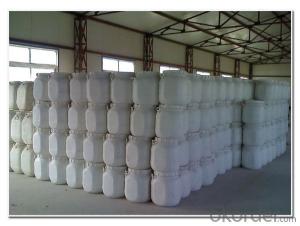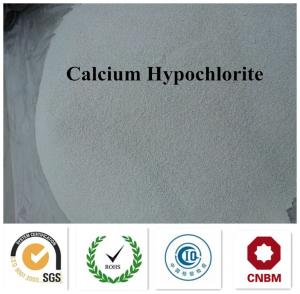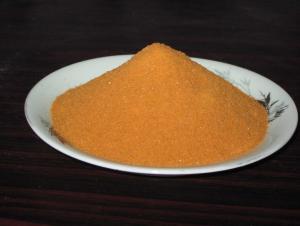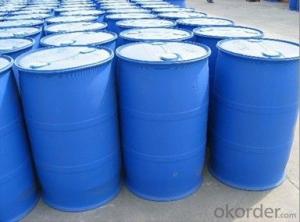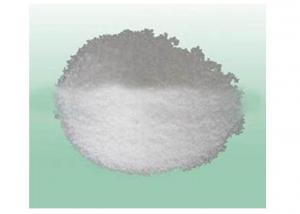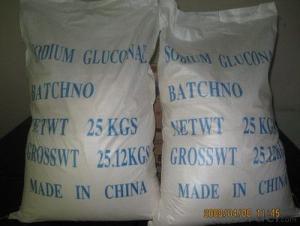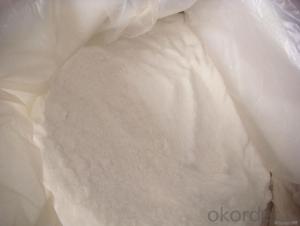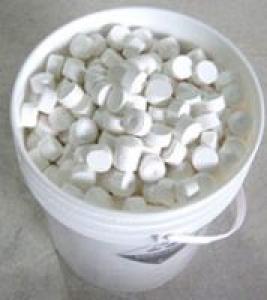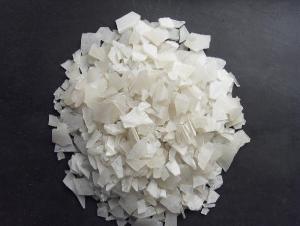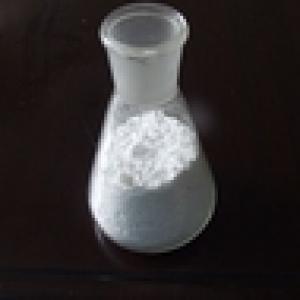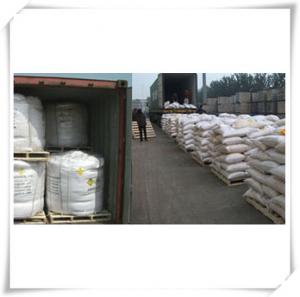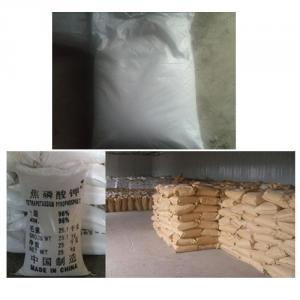Sodium Gluconate Chemical Powder Granular
- Loading Port:
- China main port
- Payment Terms:
- TT OR LC
- Min Order Qty:
- 1000 kg
- Supply Capability:
- 500000 kg/month
OKorder Service Pledge
OKorder Financial Service
You Might Also Like
Sodium gluconate
Technical Index: Q/140700RHP001-2007
Molecular Formula: C6H11NaO7
Molecular Weight: 218.1371

Property:
Particle or a white crystalline powder, easily soluble in water, slightly soluble in alcohol,
insoluble in ether.
Use:
Concrete Retardation, Paul plasticizers, food additives, electroplating complexing agent, water
stabilizer, printing and dyeing industry are color agent, Iron Steel surface treatment agent

Quality Standard:
| Item | Index | |
Industrial Grade | Food Grade | |
Property | White or light yellow crystal powder | White or light yellow powder or particle |
content | ≥ 98.0 % | ≥ 98.0~102.0% |
Chlorites | ≤ 0.1 % | ≤ 0.07% |
Sulphate | ≤ 0.05 % | ≤ 0.05% |
Restore objects | ≤ 1.2 % | ≤ 0.7% |
Drying Loss | ≤ 1.2 % | ≤ 0.5% |
Lead | ≤ 0.001 % | ≤ 0.001% |
Heavy metal | ≤ 0.002 % | ≤ 0.002% |
FAQ
1.Q: What is MOQ?
A: Our MOQ is 1 TON.
2.Q: Could you offer free sample?
A: We can provide free samples to you for quality testing.
3.Q: What about your packing?
A: For liquid: Flexitank, or IBC tank 1000L
For powder:Woven fabric bag with plastic film liner( 25kg or 1000kg)
Clients’ packing is workable.
4.Q: How about your productive capacity?
A: 150000 tons/Year.
5.Q: What is your delivery time?
A: Within 7 days after received deposit or L/C at sight.
- Q: What foods contain inorganic salts?
- Kelp, jellyfish, seaweed, moss; bones, soy products, lean meat, animal liver, brown rice
- Q: What is inorganic salt? Lemon flavor, citric acid, is it an inorganic salt?
- Although the inorganic salt in the cell, the body content is very low, but the effect is very large, if the attention of diet diversification, eat less animal fat, eat brown rice, corn and other coarse grains, do not eat too much refined flour, Salt to maintain the normal level of citric acid is an important organic acid, also known as citric acid, no ...
- Q: Why is the inorganic salt left after the burning of the food
- Food contains protein, fat, inorganic salts and water and other substances in the process of combustion in addition to inorganic salts and the rest of the water are burned, and water in the combustion process evaporates. So take the only inorganic salt.
- Q: salt is organic or inorganic?
- Inorganic -- does not contain carbon.
- Q: Does the urine and urine contain inorganic salts? Anxious
- Analysis: This question can be solved from the formation of urine. Kidney is the formation of urine organs, nephrons are the basic unit of renal structure and function, nephrons include glomerular, renal sac and renal tubules; urine formation process, including filtration, reabsorption and secretion of three processes.
- Q: What is the relationship of electronegativity and the solubility of a inorganic salts?Does the solubility increase when electronegativity decreases or vice-versa? or neither...
- The higher the electronegativity, the stronger the acid would be... Therefore it would be more soluble. take NaCl (common table salt) as an example. The difference between Na's electronegativity and Cl's electronegativity is very high so NaCl is a very soluble salt. The only exception is HF - it is a weak acid - it dissociates very weakly because O-H bonds cannot break H-F bonds which are very strong.
- Q: The application of various inorganic salts in the human body?
- Iron is an essential trace element in the animal body and plays an extremely important role in the metabolism of animals.It is not only a component of a variety of compounds but also a variety of metabolic-related enzyme activities, and to a certain extent The immune function of the body.
- Q: is sugar and salt organic or inorganic?
- Depends upon the source. Sometimes salt and sugar have added things. Look for the words certified organic to make certain.
- Q: Lack of calcium, phosphorus, iron, zinc inorganic salt should eat what?
- Soy products containing more calcium. Animal liver, spinach iron, zinc and so on.
- Q: what percent of dissolved salts found in seawater are minor inorganic salts, or trace?
- Seawater varies in composition a little but generally is about 3.5% salts. Of this about 3.1% is sodium chloride. So the remaining 0.4% is the other salts (Magnesium, Calcium and Potassium mostly, followed by just about every natural element in the periodic table in trace amounts)
Send your message to us
Sodium Gluconate Chemical Powder Granular
- Loading Port:
- China main port
- Payment Terms:
- TT OR LC
- Min Order Qty:
- 1000 kg
- Supply Capability:
- 500000 kg/month
OKorder Service Pledge
OKorder Financial Service
Similar products
Hot products
Hot Searches
Related keywords
